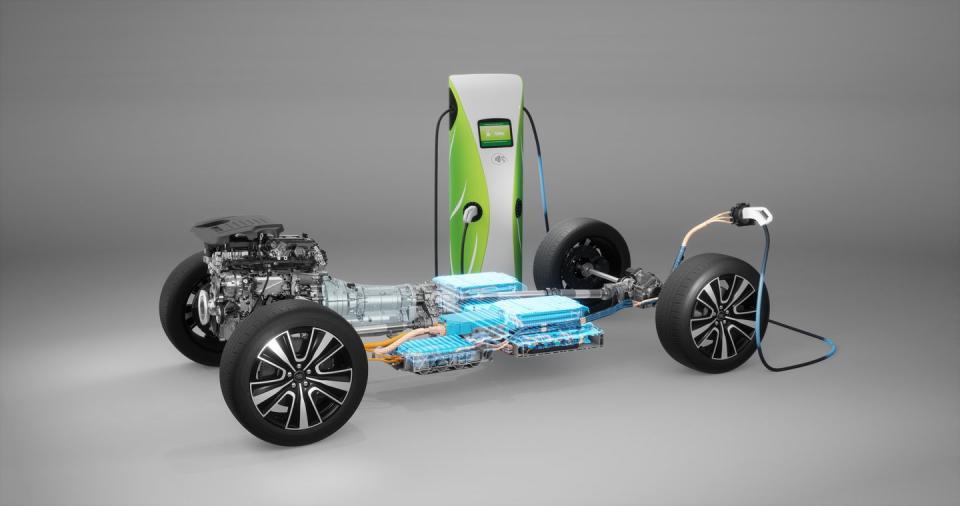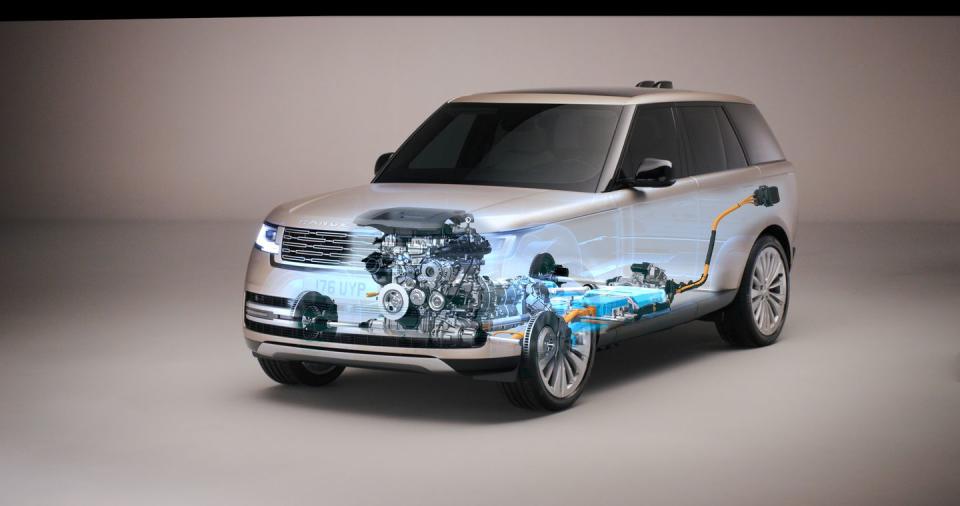Why the New Range Rover Should Be the Best Driving Yet

The new Range Rover is here, looking very much the same as the old Range Rover, but a lot has changed beneath the SUV’s streamlined surface. This is an all-new car, riding on a new platform, called MLA-flex, which underpins a number of future Jaguar Land Rover products. At a New York media preview event for the new Range Rover last month, we spoke with Nick Collins, JLR's executive director for vehicle programs, to better understand the latest iteration of an icon.
With the previous-generation Range Rover, one of the big stories was the switch to an all-aluminum architecture. This new one is still made primarily from aluminum, but steel has been reincorporated in the bulkhead, and A-, C- and D-pillars to increase stiffness and improve noise isolation. Active engine mounts were added to improve refinement, and the front differential is now mounted directly to the engine’s oil sump, moved from its prior mounting point on the front subframe.

It sounds counterintuitive at first, but an extra stiff body structure can help create a more comfortable car. Essentially, a rigid body helps make the suspension work more effectively. And Land Rover has made some significant suspension changes here.
Double wishbones are used for the forward suspension, as before, but in the rear, the new Range Rover drops JLR's novel integral link for a more traditional multi-link setup, mainly to create more space for an electric motor. (A fully electric Range Rover is set to arrive in 2024.) As standard, the new Range Rover will get JLR's first implementation of rear-wheel steering to increase maneuverability—its turning circle is better than any other Land Rover—and high-speed stability. The rear wheels can turn a maximum of seven degrees in or out of phase with the fronts.
This is also the first JLR product to get a 48-volt active anti-roll system, and it's far more efficient and effective than the hydraulic system used in the previous Range Rover. The car uses the system in a clever way, too.
"Everybody interprets active roll control, as the name suggests, as a roll control technology," Collins said. "But we use it as actively on the straight-ahead as we do in the corner…. So instead of putting in a lot of damping, which will stiffen the car up, you can let the car float, give it that magic Range Rover ride, and then use the very fine fidelity of the anti-roll control system to help with the damping balance." The roll bars work in concert with the new dampers, twin-tube continuously variable units supplied by Bilstein. The twin tubes allow for continuous adjustment of rebound and compression separately.
Of course, active anti-roll bars are great for off-roading, as they can slacken to improve wheel articulation. As you'd expect, the new Range Rover gets air springs and an electronically locking rear differential, plus Land Rover's Terrain Response 2 software, which leverages the car's array of systems to find grip in low-traction scenarios.

The all-wheel-drive system is unique in the world of Range Rovers, too. For the first time with a big Range Rover, the system only sends power to the front axle when additional traction is needed. Previous Range Rovers employed a full-time four-wheel drive system, though both the current Land Rover Defender and Range Rover Velar use a rear-drive-biased system. This new system brings an efficiency gain, as the front axle is only driven when needed, and Collins added that it helps improve on-road dynamics. "The current Range Rover is still an incredibly refined vehicle," he said. "What this car does is take that refinement to new levels, take the ride comfort on, but what it brings is a steering feel and dynamic crispness that the current car can't touch."
Our conversation with Collins focused primarily on the new Range Rover's chassis, though it's worth discussing powertrain as well. The mild-hybrid straight-six is carried over from the previous Range Rover, and while the old plug-in hybrid paired a four-cylinder with an electric motor, the new Range Rover PHEV will use the six-cylinder. The new platform also allowed Land Rover to relocate the batteries from the trunk to the floor of the car, increasing cargo space.

The old supercharged V-8 is gone, though. In its place is a 4.4-liter twin-turbo V-8 making 523 hp and 553 lb-ft of torque, and if those figures sound familiar to you, then you have a good memory for BMW specs. It's a version of BMW's familiar N63 V-8, with the same power and torque figures as the M850i. Collins said this engine was tailored specifically to suit the Range Rover, though we don't expect it to feel radically different than it does in BMWs. All engines will be paired with the ZF 8-speed automatic gearbox.
Collins described the new Range Rover as being "addictive" to drive, and while he's, of course, biased, there's good reason to believe this will be a fabulous car.
You Might Also Like

 Yahoo Autos
Yahoo Autos 